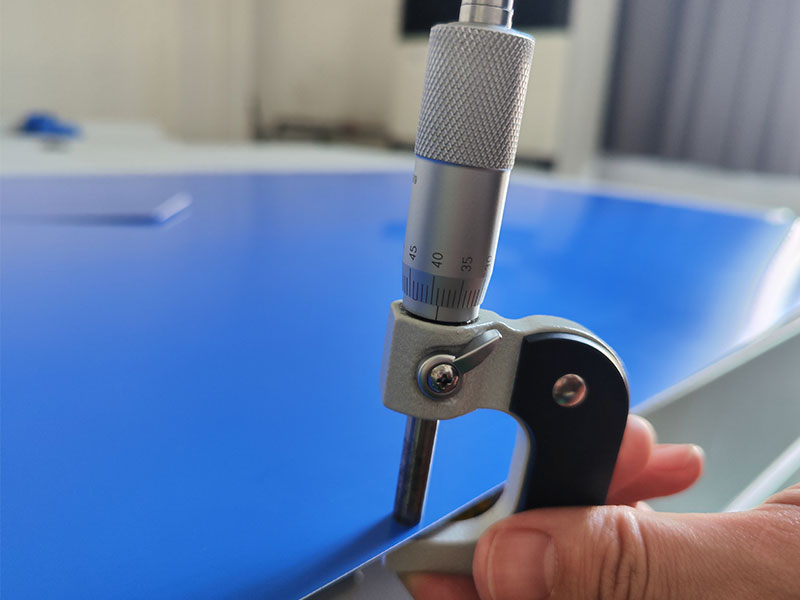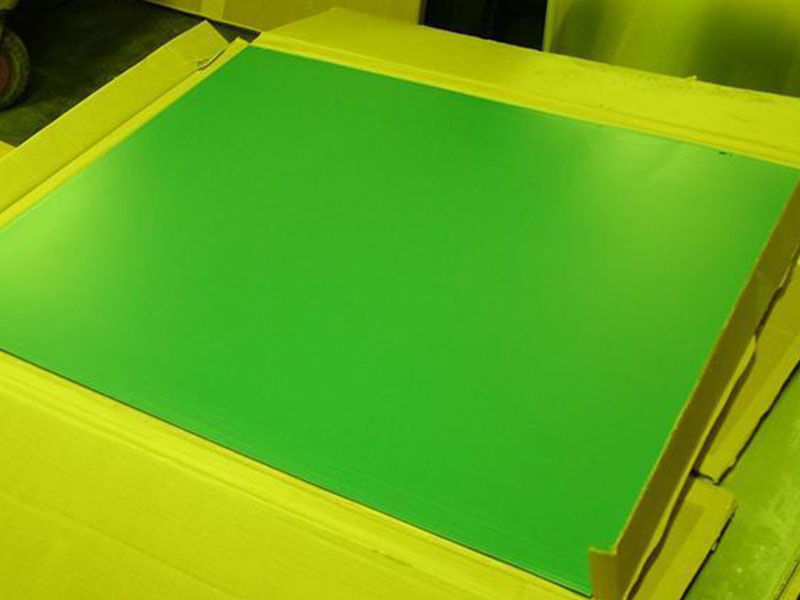CTP Plates offset Printing Plates Positive CTP Thermal Plate
Positive CTP Thermal Plates are non-photosensitized or thermally imaged plates designed for high-speed, high-quality offset printing. "Positive" refers to the plate type where the imaged (exposed) areas become ink-receptive (printing) while the non-imaged areas are water-receptive (non-printing). Thermal CTP plates are imaged with infrared laser diodes (usually 830–1064 nm), providing robust, daylight-safe handling, excellent run-length, and consistent plate development.
value propositions:
- High run length and durability
- Excellent print quality with fine line reproduction
- Compatibility with modern thermal CTP systems
- Faster set-up and reduced chemical handling compared to conventional plates
Features
- Thermal imaging sensitivity matched to common CTP lasers (830–1064 nm)
- Positive-working chemistry or chemistry-free options
- Fine dot reproduction capability (up to 2%–99% tonal range)
- High scratch, scuff, and abrasion resistance
- Good on-press stability and ink/water balance tolerance
- Daylight-safe handling for prepress convenience
- Environmentally friendly options with reduced wash-up solvents or chemistry-free processing
Typical Applications
- Commercial lithography (brochures, catalogs, direct mail)
- Package printing (paperboard, folding cartons — when specified)
- High-volume newspapers and magazines
- Short-run variable data printing where fast turnaround is needed
- Print shops seeking chemistry-free or low-chemistry workflows
Performance Characteristics
| Performance Metric | Typical Value / Range | Notes |
|---|---|---|
| Sensitivity (laser wavelength) | 830–1064 nm | Compatible with common diode lasers |
| Resolution / FM screening | Up to 200 lpi / FM screening to 20 μm | Depends on plate processing and press conditions |
| Run length (press life) | 100k — 1M impressions | Varies by plate grade and press conditions; specialty long-run types exceed 1M |
| Processing type | Chemical, Low-chemistry, Chemistry-free (CFF) | Many options available; choose by shop’s processing equipment |
| Dot stability | ±1–2% at typical tonal values | Ensures consistent tone reproduction |
| Scratch/abrasion resistance | High | Surface treatments improve durability |
| Heat & humidity tolerance | Good | Suitable for varied pressroom environments |
| Local plate storage | 6–12 months | Store in cool, dry environment; follow manufacturer recommendations |
Technical Specifications
The table below provides a typical technical specification set for a Positive Thermal CTP Plate product family. Specific numbers will vary by vendor and plate grade.
| Specification | Typical Value |
|---|---|
| Base material | Aluminum (alloy-treated) |
| Base thickness | 0.15 – 0.30 mm (150–300 μm) |
| Coating thickness | 0.5 – 2.5 μm (imaging layer) |
| Surface finish | Grained + anodized / electrochemically grained |
| Sensitizer type | Thermal polymer / diazo-free |
| Minimum dot size reproducible | 2–5 μm physical; 1–2% tone in print |
| Plate size tolerance | ±0.5 mm (industry typical) |
| Safe handling | Daylight-safe (except direct IR exposure) |
| Shelf life (unprocessed) | Typically 6–12 months at 20–25°C |
| Processing time (developer) | 10–60 seconds (depends on chemistry) |
| Developer type | Alkaline aqueous solutions or none (CFF) |
Chemical / Material Composition
Positive thermal CTP plates are multilayer products. Below is a simplified breakdown of typical material composition by functional layer. Exact proprietary chemistries vary by manufacturer.
| Layer | Typical Materials / Function |
|---|---|
| Aluminum base | Pure aluminum alloy (commonly 1xxx series) — mechanical support, heat conduction |
| Surface treatment | Electrochemical graining, anodizing (Al2O3) — adhesion, hydrophilicity |
| Tie/coating layers | Polymerized silane or carboxylate adhesives — adhesion between base and imaging layer |
| Imaging layer | Thermal polymeric diazo-free emulsion or polymer — becomes ink-receptive when exposed to IR laser |
| Protective overcoat | Hard polymer (optional) — abrasion resistance, resistance to processing chemistry |
Note: There is no single "chemical composition" like metals alloys. Imaging layers are typically organic polymers and photothermal materials formulated to respond to IR lasers and to withstand press chemistry.
Mechanical Properties (Aluminum Base)
| Property | Typical Value |
|---|---|
| Alloy series | 1xxx (pure Al) or 3xxx (Mn-containing) |
| Tensile strength | 60–150 MPa (depends on temper/alloy) |
| Yield strength | 30–110 MPa |
| Elongation | 2–30% (depends on processing) |
| Hardness (Brinell) | 15–45 HB |
These values reflect the aluminum base used in plate production and are optimized for dimensional stability, graining performance, and resistance to press handling.
Processing & Handling Guide
- Imaging: Use CTP systems with IR diode lasers matched to plate sensitivity (commonly 830–1064 nm). Adjust exposure energy per manufacturer recommendations.
- Processing: Choose between conventional wet processing, low-chemistry processors, or chemistry-free processors depending on plate model.
- Development: Typical development cycles range 10–60 seconds in developer + rinse. Post-baking is optional for extended run lengths (typically 120–170°C for 60–120 seconds).
- On-press: Start-up conditions — moderate ink film coverage and water balance; follow press-specific start-up guides.
- Cleaning: Use neutral pH plate cleaners and avoid abrasive or highly alkaline agents that may damage the imaging layer.
Environmental & Safety Considerations
- Many thermal plates are diazo-free; chemistry-free plates eliminate developer waste streams.
- Low-chemistry options reduce chemical consumption and wastewater load.
- Used processors’ effluent should be treated according to local regulations.
- Aluminum base is recyclable; plate recycling programs exist in the industry.
Comparative Benefits
| Benefit | Positive Thermal CTP Plate |
|---|---|
| Print quality | High — excellent dot stability and tonal reproduction |
| Workflow | Faster, daylight-safe handling; simplified prepress |
| Durability | High abrasion and run-length potential |
| Environmental impact | Lower with low-chemistry or chemistry-free options |
| Cost of ownership | Reduced labor and chemical costs; plate cost vs run-length tradeoff |
Use Case Examples
- Commercial Printer — High-volume brochures:
- Use long-run thermal positive plates with wet processing or post-bake for runs exceeding 200k impressions. Benefits: consistent color, minimal dot gain, durable plate life.
- On-demand Short Runs — Variable data and fast turnaround:
- Use chemistry-free thermal plates for quick imaging and minimal processing time. Benefits: reduced turnaround, lower waste, simpler workflow.
- Packaging Prepress — Folding cartons:
- Select plates compatible with heavier stocks and higher ink densities; consider post-bake to increase durability. Benefits: better dot retention with heavy inks and coatings.
- Newspaper or Magazine — High-speed web presses:
- Choose plates with proven FM screening capability and excellent press stability. Benefits: long runs with predictable tone and high-speed durability.
Typical Technical Specification Table (Example Product)
| Parameter | Value (Example Model: PT-TP100) |
|---|---|
| Laser sensitivity | 830–1064 nm |
| Recommended exposure energy | 60–120 mJ/cm² |
| Resolution capability | 2–99% tonal range; up to 200 lpi / 20 μm FM |
| Run length | 300k — 1M impressions (grade dependent) |
| Processing type | CFF / Low-chem / Conventional |
| Development time | 8–45 seconds (depending on processor) |
| Plate thickness | 0.21 mm (standard) |
| Shelf life | 12 months (20°C) |
| Safe light | Daylight-safe |
Selection Checklist
When selecting a Positive Thermal CTP Plate, evaluate the following:
- Laser compatibility (wavelength and energy)
- Processing equipment (conventional, low-chem, CFF)
- Required run length and expected press conditions
- Screen ruling or FM screening needs
- Post-processing options (post-bake) and expected ink/toner types
- Environmental targets and disposal/recycling capabilities
- Cost per thousand impressions vs. plate cost
Troubleshooting Tips
- Insufficient image density on press: Increase exposure energy or verify laser output and plate sensitivity.
- Dot gain or unstable tone: Adjust dampening solution and ink balance; check plate cleaning and processing parameters.
- Early plate wear: Confirm post-bake settings (if used), verify abrasion resistance grade, and check roller settings/ink formulation.
- Developer staining or scumming: Check developer concentration and replenishment rates; ensure processor is properly maintained.
https://www.aluminumplate.net/a/ctp-plates-offset-printing-plates-positive-ctp-thermal-plate.html







